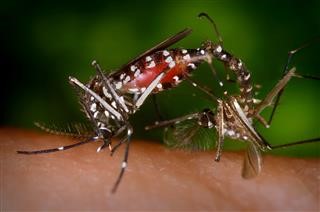The Infertility Organization
Varicocele and Infertility Rates
You found the best source for complete info and resources for Varicocele and Infertility Rates on the Internet.
Infertility is defined as the inability to become pregnant after 12 months of regular, unprotected intercourse. Those who do have fertility problems are treated according to the following guidelines: [112, 113, 114] Chronic cervical factor of absence of mucus - Intrauterine insemination Cervical incompetence - Cerclage Damage/absence of fallopian tubes (ectopic) - In vitro fertilization Unicornuate uterus A unicornuate uterus remains undetected unless fertility is compromised. However, future pregnancy is possible with the other ovary and tube.
Gonadotropins can trigger ovulation when Clomid or Serophene don't work. In another 30% of all cases, the cause is in the male partner. For an appendectomy, the right shoulder can be particularly painful. Outlook For couples who experience fertility problems and those who wish to have children at an older age, there are more options available than ever before.
More Details About Varicocele and Infertility Rates

Here are Some More Information on Infertility Treatment Laya
Intercourse 2 or 3 times per week may be considered average, although the frequency varies. Modifying these behaviors can improve a man�s fertility and should be considered when a couple is trying to achieve pregnancy.
More Info Around Varicocele and Infertility Rates
The idea is that for women beyond age 35, every month counts and if made to wait another six months to prove the necessity of medical intervention, the problem could become worse. The Leydig cells in the testicles control the LH, and the cells build androgens. Chronic conditions: These include AIDS or cancer. 6-Mb Deletion of the Human Y Chromosome Persists Through Balance Between Recurrent Mutation and Haploid Selection. (PDF, 295 KB) Nature Genetics, 2003.
Below are Some More Info on Infertility Support Group Nj
Male and female factors can exist in isolation or combination and fertility investigations, diagnoses and treatment should always be considered in the context of the couple. Male factor Sperm problems will contribute to about 40% of infertility cases. Causes in men The following are common causes of infertility in men. Signs of Potential Infertility in Men Infertility symptoms in men can be vague. The Intra-abdominal Testes: Microvascular Autotransplantation. (PDF, 4 MB) The Journal of Urology, 1981. In men who have the necessary reproductive organs to procreate, infertility can be caused by low sperm count due to endocrine problems, drugs, radiation, or infection. Smoking: Smoking significantly increases the risk of infertility in both men and women, and it may undermine the effects of fertility treatment. Sherman Silber: Be Fruitful and Multiply. (PDF, 6 MB) Lifestyles Magazine, 1999. Medication. If you have ovulation problems, you may be prescribed drugs such as clomiphene citrate (Clomid, Serophene), gonadotropins (such as Gonal-F, Follistim, Humegon and Pregnyl), or letrozole. Fertility treatments for women Fertility drugs might be prescribed to regulate or induce ovulation. Evaluation of the Female Partner: Evidence of Ovulation (Continued) Progesterone test. Surgical Management of Male Infertility. (PDF, 2 MB) Chapter 12 from textbook, Male Infertility, 1992.
Previous Next
See also
Infertility Treatment Surgery
Infertility in Female Physicians
Infertility Treatment Slideshare